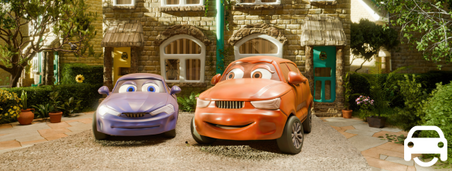The future of infotainment: How in-car tech is evolving...

Car infotainment systems are getting more advanced with every new model update. Manufacturers are increasing connectivity and taking cue from phone brands such as Apple and Google. Eventually, in-car infotainment will share many of the features and intuitive usability of our phones, improving the user experience and interactivity.
To achieve these goals, manufacturers are adding more touchscreens and tablet-like devices for passengers to operate the main screen. In the latest BMW 7 Series, rear passengers now get a 31-inch 8K cinema screen. Some brands are sticking with rotary dials to operate screens, like BMW’s iDrive, but dials can be found in conjunction with touchscreens too.
Voice control is becoming more common to control features in the car, Mercedes’ MBUX system is activated by saying “Hey Mercedes” and Audi’s Virtual Cockpit requires a simple “Hey Audi”. Outside of manufacturer integrated voice commands, Apple CarPlay and Android Auto employ Siri and Google Assistants to blend seamlessly with the smartphone experience.
The abilities of voice assistants are now bringing the car into the ecosystem of a smart home, seen with the integration of Alexa. This allows drivers to operate the heating at home, turn lights on ready for their return and order shopping from their vehicle. At home they can turn the vehicle’s engine on, unlock the doors and set the climate control. The presence of Alexa in the home and vehicle include the car as a moving workspace.
As such, voice commands linked to systems like Alexa, Apple or Android products make it easier for personalisation to transfer into the vehicle. These systems learn about the user and this technology can be adapted to create a set of driver preferences.
With the encouragement of car sharing and the financial and environmental implications of owning a vehicle, it’s likely to become more common, in cities especially, for multiple drivers to use the same car. Drawing on these systems opens up the possibility for the car to automatically apply different driver settings such as seat and steering wheel position, music playlists and climate control. In the short term, it’s anticipated that infotainment systems will have more personalisation features with the driver being given the ability to rearrange the home menu or add specific functions and shortcuts.
The continuation of incorporating the vehicle into the driver’s technological ecosystem paves the way for the car to become an office on the move. The introduction of autonomous vehicles will accelerate this process. Vehicles like Teslas already have the hardware for autonomous driving and have some capabilities that are expected to feature more heavily when the car can drive itself. This is where the entertainment in infotainment will become more dominant with gaming, movies and business meetings on the go.
Whilst some of these technologies may come to fruition in the near future, the ultimate destination is a more connected technological sphere that encompasses the car as a key additional work and relaxation space.
Related reading:
10 Medical Conditions You Must Report To The DVLA, Or Risk Your Insurance Being Revoked
These Are The Best Value Budget Cars In 2022






